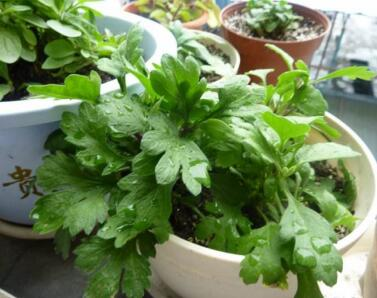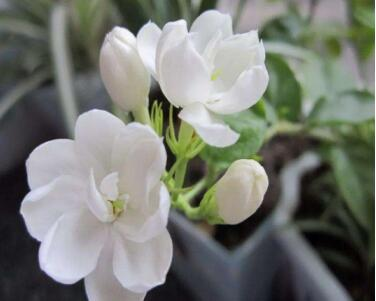Cutting methods of Hibiscus hibiscus
1. Branch selection of Hibiscus hibiscus
First of all, when selecting the branches of hibiscus for cutting, we must choose the appropriate branches, use the mother plant with strong growth and no diseases and insect pests as far as possible, and cut the branches on the outside of the plant, it is best to choose branches that are luxuriant and healthy without insect pests, so as to facilitate the success of cutting. Then cut the branch into small segments of about 10 centimeters, leaving a few leaflets on the branch, and the lower cut needs to be cut into a horseshoe shape, so that the branch can absorb more water. The incision should not be too far or too close to the lateral lobe, about one centimeter. In addition, it should be noted that after cutting the branches, the branches should be inserted into the soil as soon as possible to prevent the loss of water in the branches.

2. Cutting season of Hibiscus hibiscus
Although hibiscus hibiscus can be cut all the year round, there is no need to be too constrained by the limitations of the season. But in spring, hibiscus reproduces fastest. When beginners try to cut hibiscus by themselves, they might as well cut it in spring, which can increase the success rate of hibiscus cuttage and achieve better results.
Culture methods of Hibiscus hibiscus I. Light conditions
Hibiscus hibiscus is a solar plant, which likes light, and it is most suitable to keep light for more than 6 hours a day. In sufficient light can promote the growth of hibiscus, make it more robust, too cool environment will reduce flowering, affecting its ornamental. If it is placed indoors, it should be placed in a place where it can be exposed to light and bright for a long time.
II. Soil requirements
For the soil used in the cultivation of hibiscus, the general market nutrient soil can be used, or it can be prepared with mountain mud (rotten leaf soil) plus a small amount of river sand and organic fertilizer. At the same time, because hibiscus blossoms and consumes a lot of fertilizer, it can be applied in the soil with appropriate amount of fertilizer, such as fully mature organic fertilizer, nitrogen fertilizer and phosphate fertilizer.
III. Watering matters
The soil should be kept moist and rehydrated in time. When watering, the difference between water temperature and soil temperature should be prevented. Rain Water or pond water can be used for watering, while tap water should be kept for one or two days before use.
Third, temperature control
The cold tolerance of hibiscus is weak, so in spring and autumn, when the temperature difference between day and night is large, the hibiscus should be moved indoors in time at night, the noon with the strongest light in summer should be properly shaded, and in winter, it should be avoided to be placed outdoors and maintained in a warm indoor.
Culture methods and matters needing attention of hibiscus hibiscus
Latin name Anisodontea capensis
Don't call it South African sunflower, mini hibiscus and fennel grass. Taiwan has many uses: Jade exquisite, exquisite Fusang.
The plant kingdom.
Family Malvaceae (Malvaceae)
Belongs to Anisodontea of South Africa
Plant hibiscus
Hibiscus is a perennial semi-shrub of Malvaceae. Also known as South African sunflower, small hibiscus, exquisite hibiscus, mini hibiscus, fake hibiscus, mini hibiscus and anise grass. Taiwan has many uses: jade exquisite, exquisite Fusang. The plant height is 1 OOcm~180cm. Stems branched, green, lavender or brown. Leaves alternate, triangular-ovate. Leaves trifid, lobes triangular, with irregular teeth. At the beginning of its growth, it looks like an herb, and then it matures and the branches become woody. Flowering the Summer Solstice autumn. It looks like a miniature version of hibiscus. One or three flowers bloom in the axils of the leaves. The flowers are small, 5-merous, round and lovely, pink or pink. It blossoms continuously, there are many buds, the petals are light and the flower shape is beautiful. Producing areas of Shandong, Anhui, Jiangsu Changjing Garden, Zhejiang and other places.
1. Special features
The plant height is 1 OOcm~180cm. Stems branched, green, lavender or brown. Leaves alternate, triangular-ovate, leaves trifid, lobes triangular, with irregular teeth. The flowers are small, 5-merous, round and lovely, pink or pink. There are many buds, the petals are light and the flowers are beautiful.
2. Growth habits
Suitable for potted plants. The cultivation medium should choose the soil with good permeability and drainage, and the general nutritious soil sold in the market can also be prepared with mountain mud (rotten leaf soil) plus a small amount of river sand and organic fertilizer, and clayey soil is avoided.
I like light. It is best to keep more than 6 hours of light every day. Sufficient light can promote plant growth to be more robust, too shaded and easy to lengthen internodes and reduce flowering. Such as indoor maintenance, should be placed in bright places, such as balcony, windowsill and so on.
I like to be fat. When the fertilizer is sufficient, the hibiscus grows rapidly and blossoms luxuriantly. When young plants are mainly balanced fertilizer, or slightly partial to nitrogen fertilizer, the ratio of ammonia: phosphorus: potassium is generally better at 20:20:20 in spring, and the fertilizer with higher phosphorus content is applied in early summer, such as 10:30:10 flowering fertilizer, which consumes more fertilizer because of more flowering. 1 200 times liquid fertilizer should be applied once in 10 days or so. Winter enters the dormant period, stop fertilizing. If there are conditions, apply some fully mature organic fertilizer, the effect is better.
3. Distribution range
Hillsides or hills native to South Africa.
4. Maintenance methods
Breeding and reproduction
The soil should be kept moist, water can be replenished after the surface is dry, and water can be properly controlled and slightly moisturized in winter. When watering, the water temperature should be consistent with the soil temperature to prevent excessive temperature difference from causing damage to the root system. If the water is neutral or slightly acidic, you can choose Rain Water or pond water. Tap water is best placed in a tank or bucket for one or two days before use. For example, water with more minerals is prone to salt ion accumulation, resulting in soil acidification and affecting plant growth.
Long. The cuttage method can be used for cultivation, which should be carried out in the rainy season, and the branches should be semi-lignified, too old and too young are not conducive to rooting. It usually takes 1 month to take root.
In order to promote the plant to form a full plant type, coring method can be used to cut off part of the over-dense branches of some diseased and withered branches at any time, which is conducive to ventilation and other branch growth; after plant maintenance in 2012, the growth becomes worse and flowering decreases, then light or heavy cutting can be carried out, light cutting can cut off the branches of 1x3, and all the branches above 10cm can be cut off to promote plant renewal and rejuvenation. Small hibiscus resistant to pruning, can be cut into balls, hedges or other shapes to increase ornamental.
Pest control
Red spiders and aphids are more likely to occur.
Red spiders can be controlled by 500 times of dicofol EC or 1 500 times of 40% omethoate EC.
Aphids can be sprayed with 40% dimethoate EC 1000 times.
- Prev

Planting conditions of Coptis chinensis
Planting conditions of Coptis chinensis
- Next

I. methods of cultivating jasmine flowers
1. The first step in configuring the nutrient soil for jasmine cultivation is to configure the required nutrient soil first. Jasmine is different from other flowers, it prefers slightly acidic soil. So don't ignore this when choosing or allocating nutrient soil.
Related
- Fuxing push coffee new agricultural production and marketing class: lack of small-scale processing plants
- Jujube rice field leisure farm deep ploughing Yilan for five years to create a space for organic food and play
- Nongyu Farm-A trial of organic papaya for brave women with advanced technology
- Four points for attention in the prevention and control of diseases and insect pests of edible fungi
- How to add nutrient solution to Edible Fungi
- Is there any good way to control edible fungus mites?
- Open Inoculation Technology of Edible Fungi
- Is there any clever way to use fertilizer for edible fungus in winter?
- What agents are used to kill the pathogens of edible fungi in the mushroom shed?
- Rapid drying of Edible Fungi

